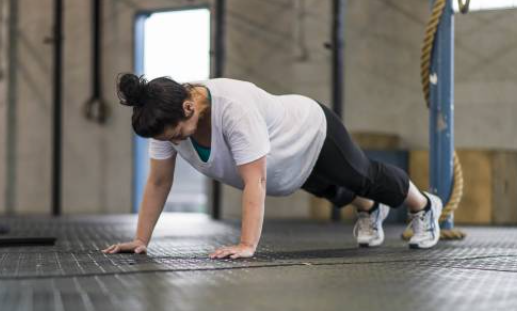Strength training is an essential component of any runner’s training program. While running is an excellent cardiovascular workout, it primarily targets the lower body, leaving the upper body and core muscles underutilized. Strength training helps to balance out the body, prevent injuries, and improve running performance.
Runners can benefit from a variety of strength training exercises, including bodyweight exercises, resistance band exercises, and weightlifting. Bodyweight exercises, such as push-ups and planks, can be done anywhere and require no equipment. Resistance band exercises, such as rows and bicep curls, are a great way to add resistance to bodyweight exercises. Weightlifting exercises, such as squats and deadlifts, can improve overall strength and power.
It’s important to note that strength training for runners should be specific to the individual’s goals and needs. A personalized strength training program can help runners target their weak areas and improve overall performance. Additionally, proper form and technique are crucial to prevent injuries and maximize the benefits of strength training.
Benefits of Strength Training for Runners
Strength training is often overlooked by runners, but it can be an essential part of a well-rounded training program. Here are some benefits of strength training for runners:
- Improved running efficiency: Strength training can help runners improve their running form and technique, leading to better running efficiency. This means that runners can run faster and longer with less effort.
- Reduced risk of injury: Strength training can help runners build stronger muscles, tendons, and ligaments, reducing the risk of injury. This is especially important for runners who are prone to common running injuries such as shin splints, IT band syndrome, and plantar fasciitis.
- Increased power and speed: Strength training can help runners develop more power and speed, which can translate to faster race times.
- Improved bone density: Running is a weight-bearing exercise, but it only targets certain bones in the body. Strength training can help runners improve their overall bone density, reducing the risk of osteoporosis later in life.
It’s important to note that strength training should be done in conjunction with a proper running program, not as a replacement for running. Runners should aim to strength train at least twice a week, focusing on exercises that target the major muscle groups used in running such as the glutes, hamstrings, quads, and core.
Some examples of strength training exercises for runners include squats, lunges, deadlifts, calf raises, and planks. It’s important to start with lighter weights and gradually increase the weight as strength improves. Runners should also focus on proper form and technique to avoid injury.

Muscles Used in Running
Running is a full-body exercise that engages a variety of muscles. While the primary muscles used in running are located in the lower body, the upper body also plays an important role in maintaining balance and stability.
The following are the primary muscles used in running:
- Quadriceps: These muscles are located in the front of the thigh and are responsible for extending the knee.
- Hamstrings: These muscles are located in the back of the thigh and are responsible for flexing the knee.
- Calf muscles: These muscles are located in the lower leg and are responsible for pushing off the ground during the running stride.
- Glutes: These muscles are located in the buttocks and are responsible for extending the hip.
- Core muscles: These muscles include the abdominals, obliques, and lower back muscles and are responsible for maintaining stability and balance during running.
It’s important to note that all of these muscles work together to create efficient running form. Neglecting any one of these muscle groups can lead to imbalances and potential injuries.
Strength training exercises that target these muscles can help improve running performance and reduce the risk of injury. Some examples of exercises that target these muscles include squats, lunges, deadlifts, calf raises, and planks.
Types of Strength Training for Runners
Strength training is an essential component of any runner’s training regimen. It can help prevent injuries, improve running efficiency, and increase overall strength and power. Here are some types of strength training that runners can incorporate into their training:
Bodyweight Exercises
Bodyweight exercises are a great way to improve strength without the need for any equipment. These exercises include push-ups, squats, lunges, planks, and burpees. Bodyweight exercises can help improve core strength, balance, and stability, which are all important for runners.
Resistance Band Exercises
Resistance band exercises are a great way to add resistance to bodyweight exercises. Resistance bands can be used to target specific muscle groups, such as the glutes, hips, and thighs. These exercises can help improve running form and prevent injuries.
Weight Training
Weight training involves using free weights or weight machines to improve strength. This type of strength training can help improve overall strength and power, which can translate to improved running performance. It’s important to focus on compound exercises, such as squats, deadlifts, and bench presses, which work multiple muscle groups at once.
Plyometric Exercises
Plyometric exercises involve explosive movements, such as jump squats and box jumps. These exercises can help improve power and speed, which are important for runners. It’s important to start with low-intensity plyometric exercises and gradually increase intensity and volume over time.
Sample Strength Training Exercises for Runners
Strength training is an essential part of any runner’s training regimen. It can help improve running performance, reduce the risk of injury, and increase overall muscular endurance. Here are some sample strength training exercises that runners can incorporate into their training program:
1. Squats
Squats are a great exercise for runners as they help strengthen the muscles in the lower body, including the quads, hamstrings, and glutes. To perform a squat, stand with your feet shoulder-width apart, toes pointing forward. Lower your body down as if you were sitting in a chair, keeping your back straight and your knees in line with your toes. Push back up to the starting position and repeat for 3 sets of 12-15 reps.
2. Lunges
Lunges are another excellent exercise for runners as they help improve balance and stability while strengthening the muscles in the legs. To perform a lunge, step forward with one leg and lower your body down until your front knee is at a 90-degree angle. Keep your back straight and your core engaged. Push back up to the starting position and repeat on the other leg. Aim for 3 sets of 12-15 reps on each leg.
3. Deadlifts
Deadlifts are a compound exercise that work multiple muscle groups, including the hamstrings, glutes, and lower back. To perform a deadlift, stand with your feet shoulder-width apart, toes pointing forward. Hold a barbell or dumbbells in front of your body with your palms facing down. Keeping your back straight, hinge forward at the hips and lower the weights down towards the ground. Push back up to the starting position and repeat for 3 sets of 8-10 reps.
4. Plank
The plank is a great exercise for strengthening the core muscles, which are essential for maintaining good running form and preventing injury. To perform a plank, start in a push-up position with your hands shoulder-width apart and your feet hip-width apart. Lower your forearms to the ground and hold your body in a straight line from head to heels. Hold for 30-60 seconds and repeat for 3 sets.
5. Hip Bridges
Hip bridges are an excellent exercise for runners as they help strengthen the glutes and improve hip mobility. To perform a hip bridge, lie on your back with your knees bent and your feet flat on the ground. Lift your hips up towards the ceiling, squeezing your glutes at the top of the movement. Lower back down to the starting position and repeat for 3 sets of 12-15 reps.
These are just a few examples of strength training exercises that runners can incorporate into their training program. Remember to start with lighter weights and progress gradually to avoid injury. Aim to strength train 2-3 times per week, allowing for adequate rest and recovery between sessions.
Incorporating Strength Training into Running Routine
Strength training is a crucial component of any runner’s training plan. It helps to improve running efficiency, speed, and endurance while reducing the risk of injury. Here are some tips on how to incorporate strength training into your running routine:
1. Start Slowly: If you’re new to strength training, start with bodyweight exercises such as squats, lunges, and push-ups. Gradually increase the intensity and weight as you become stronger.
2. Schedule It: Plan your strength training sessions in advance and make them a part of your regular running routine. Aim for at least two strength training sessions per week, but don’t overdo it. Allow your body time to recover between sessions.
3. Focus on Core Strength: A strong core is essential for proper running form and injury prevention. Incorporate exercises such as planks, bridges, and Russian twists into your routine.
4. Use Resistance Bands: Resistance bands are a great way to add resistance to your exercises without the need for heavy weights. They’re also easy to pack and take with you on the go.
5. Don’t Neglect Your Upper Body: Running primarily uses your lower body, but your upper body plays a role in maintaining proper form and balance. Incorporate exercises such as push-ups, pull-ups, and rows into your routine.
6. Stretch: Don’t forget to stretch after your strength training sessions. This will help to reduce soreness and improve flexibility.
By incorporating strength training into your running routine, you’ll not only improve your running performance but also reduce your risk of injury. Remember to start slowly, schedule your sessions, focus on core strength, use resistance bands, don’t neglect your upper body, and stretch afterward. Happy running!
Conclusion
Strength training is a valuable addition to any runner’s training regimen. It can help improve running economy, reduce the risk of injury, and enhance overall performance. However, it’s important to approach strength training with caution and gradually progress to avoid injury.
When incorporating strength training into your routine, it’s important to focus on exercises that target the muscles used in running, such as the glutes, hamstrings, and quadriceps. It’s also important to maintain proper form and technique to maximize the benefits of each exercise.
Additionally, it’s important to remember that strength training should not replace running-specific training. Running should still be the primary focus of your training, with strength training serving as a supplement to improve overall performance.
Overall, incorporating strength training into your running routine can have numerous benefits. By focusing on proper form, gradually progressing, and targeting the right muscles, runners can improve their running economy, reduce the risk of injury, and enhance overall performance.



